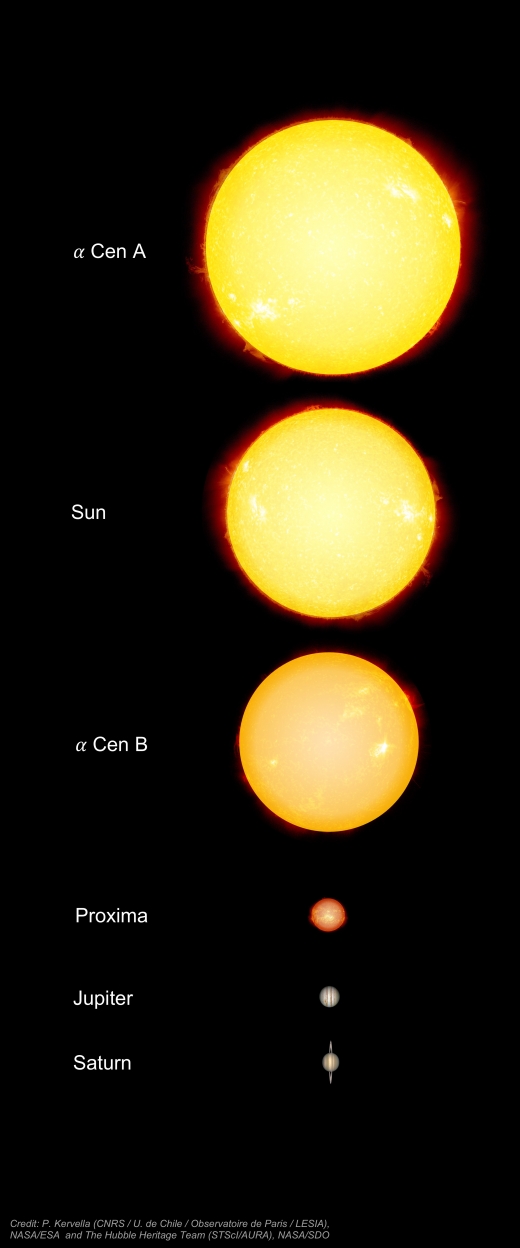Tightening the Parameters for Centauri A and B
http://www.centauri-dreams.org/?p=37114
When it comes to the nearest stars, our focus of late has been on Proxima Centauri and its intriguing planet. But of course the work on Centauri A and B
continues at a good clip. The prospects in this system are enticing — a G-class star like our own, a K-class dwarf likewise capable of hosting planets,
and the red dwarf Proxima a scant 15000 AU away. Project Blue examines how we might image planets here as our radial velocity studies proceed.
But we have much to learn, and not just about possible planets. A new paper by Pierre Kervella (Observatoire de Paris), working with Lionel Bigot and
Fréderic Thévenin (both at the Observatoire de la Cote d’Azur), reminds us of the importance of firming up our stellar data.
We need to learn as much as possible about Centauri A and B not just because we’d like to find planets there but also because the work has implications
for space missions, including the ESA’s Gaia, which will tighten our distance measurements to many stars. The Alpha Centauri stars are important benchmarks
for Gaia, putting the emphasis on an accurate calibration of the basic stellar parameters in this system.
Kervella and team have used new observations of Centauri A and B with the Very Large Telescope Interferometer equipped with the PIONIER (Precision Integrated
Optics Near-infrared Imaging ExpeRiment) beam combiner to operate in the near infrared. Their paper reports on improved measurements of both stars’ angular
diameters in relation to the phenomenon known as limb darkening. The latter results point to the need to improve our models as we study the photospheres of
stars including our own Sun.
Limb darkening refers to the gradual decrease in brightness that we see as we look away from the center of a star toward its outer edge, or limb. Have a look
at the image below to see the effect, which is easily visible in photographs of the Sun. When we look at the center of the Sun’s disk, we see the greatest
light emission because we are viewing the deepest, and hottest layers, while at the limb, we are seeing only cooler layers that produce less light.
The phenomenon is important because we can use it to study how a star’s atmosphere is structured, but it turns up as a factor in everything from eclipsing binary
stars to gravitational microlensing. Moreover, limb darkening will affect the shape of the transit curve produced by a planet moving in front of its star. The planet
blocks a smaller part of the star’s light when it is near the limb, and a greater fraction as it moves toward the center of the star. The center of a transit, in other
words, is always going to be deeper than the edges, something that would not happen if a star had a uniform brightness (there the transit ‘curve’ would appear flat).
